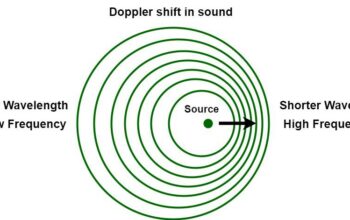In the intricate interplay between the disciplines of physics and music, the concept of entropy emerges as a profound lens through which we can explore the chaotic and often unpredictable nature of sound. Entropy, fundamentally a measure of disorder, finds a surprising resonance in the structured world of music. While one may perceive music as an organized arrangement of notes and rhythms, a deeper examination reveals the underlying chaos—an eternal balancing act between order and disorder that reflects the very principles of thermodynamics.
At its core, entropy is a measure of the dispersal of energy within a system. High entropy indicates a state of greater disorder, while low entropy signifies a more ordered arrangement. In the context of music, this concept manifests itself in the tension between predictability and surprise. Composers often navigate this tension with finesse, crafting compositions that ebb and flow between familiar harmonic structures and unexpected dissonances. The listener’s response to this interplay becomes a kaleidoscope of emotions, resonating with both the latent order and the intentional chaos embedded in musical compositions.
The fascination with music is not merely a result of its auditory appeal; rather, it is deeply rooted in the psychological and physiological responses it elicits. Theoretically, the human brain thrives on patterns, seeking out rhythms and harmonies that resonate within its auditory cortex. This propensity for recognizing patterns is why certain musical phrases evoke feelings of nostalgia or joy. Yet, when confronted with deviations from expected patterns—such as a sudden change in key or an atypical rhythm—the brain experiences a surge of unpredictability, analogous to an increase in entropy within a musical context.
Musical order is often achieved through the establishment of a key signature, a set of notes that outlines the tonal landscape of a piece. However, composers such as Igor Stravinsky and John Cage challenged these conventional frameworks, constructing works that manipulate musical order to elicit surprise and thought. Stravinsky’s “The Rite of Spring,” with its rhythmic complexity and dissonant harmonies, exemplifies a calculated disorder that ignited turmoil upon its premiere—a reflection of high entropy that defied audience expectations. Similarly, Cage’s “4’33”,” which consists of the absence of sound, illustrates the idea that silence, too, can serve to heighten awareness of the surrounding chaos and noise, provoking an introspective reflection on the nature of sound itself.
In exploring the notion of entropy within the context of music, one must also consider the role of improvisation. Jazz musicians, for instance, often engage in spontaneous creation, navigating through a landscape of harmonic possibilities that oscillate between order and chaos. The resulting performance not only reflects the individual artistry of the musicians but also embodies a collective dynamic that shifts with the ebbs and flows of the ensemble. This improvisational exchange fuels creativity, enabling musicians to push boundaries and explore innovative structures, thereby inviting higher entropy into the musical experience.
The very act of listening to music can be likened to participating in a thermodynamic system. As one immerses oneself in the auditory experience, one’s emotional state fluctuates, mirroring changes in entropy. Engaging with a particularly turbulent symphony can evoke feelings of disarray, while a calm sonata may instill a sense of solace and order. The listeners’ internal responses are akin to a microcosm of the overall system, wherein the brain attempts to process and derive meaning from the sonic chaos. In this sense, the exploration of entropy in music and its psychological ramifications reveals a profound connection between emotional experience and the principles of physics.
Furthermore, the exploration of entropy extends beyond mere auditory experiences; it reaches into the realms of composition, performance, and reception. Composers perpetually tread the thin line between the familiar and the unfamiliar. For instance, minimalist composers like Steve Reich employ repetitive structures that may initially appear ordered, yet the gradual evolution of these patterns introduces a layer of complexity that reflects the principles of entropy. This striving for balance serves to engage the listener, leading them through a journey from predictability into a realm of sonic exploration.
The acknowledgment of entropy within music encourages a reevaluation of the role it plays in both creation and perception. While structured forms provide a canvas upon which composers can paint their sonic masterpieces, it is the calculated and uncalculated deviations from these structures that invigorate the musical landscape. In essence, the allure of music draws from its ability to encapsulate both order and chaos, allowing listeners to traverse emotional peaks and valleys, much like particles within a thermodynamic system.
In conclusion, the intricate relationship between entropy and music underscores that the fascination with sound is enriched by the tension between chaos and order. Musicians and listeners alike engage in a never-ending dialogue, one that oscillates between structured patterns and improvisational bursts of creativity. The essence of music, therefore, is not solely in its melodic or harmonic beauty but in its capacity to reflect the broader principles of the physical universe—an embodiment of entropy that invites exploration, emotional resonance, and ultimately a deeper understanding of chaos amidst order. As we delve into the physics of music, we uncover the rich tapestry woven from the delicate threads of sound, silence, structure, and unpredictability, illuminating our intrinsic fascination with the art of music itself.










